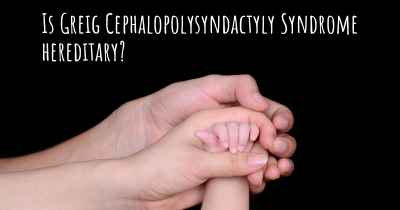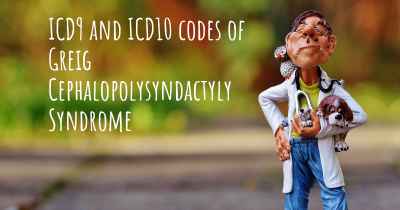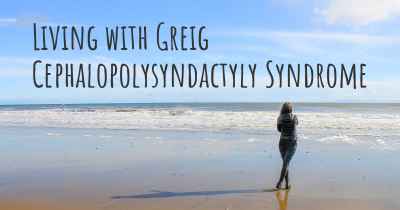Which are the symptoms of Greig Cephalopolysyndactyly Syndrome?
See the worst symptoms of affected by Greig Cephalopolysyndactyly Syndrome here

Symptoms of Greig Cephalopolysyndactyly Syndrome
Greig Cephalopolysyndactyly Syndrome (GCPS) is a rare genetic disorder that affects the development of various parts of the body. It is characterized by a combination of craniofacial abnormalities, polydactyly (extra fingers or toes), and syndactyly (fusion of fingers or toes). The severity and specific symptoms can vary widely among affected individuals.
Craniofacial Abnormalities
One of the key features of GCPS is craniofacial abnormalities, which primarily affect the head and face. These abnormalities can include:
- Macrocephaly: Individuals with GCPS often have an abnormally large head size.
- Wide-set eyes: The eyes may be spaced farther apart than normal.
- Frontal bossing: The forehead may appear prominent and protruding.
- Midface hypoplasia: The middle part of the face, including the nose and upper jaw, may be underdeveloped.
- High-arched palate: The roof of the mouth may have a high arch.
- Cleft lip and/or palate: Some individuals with GCPS may have a split in the upper lip and/or roof of the mouth.
Polydactyly and Syndactyly
Another characteristic feature of GCPS is the presence of extra fingers or toes (polydactyly) and/or fused fingers or toes (syndactyly). The extra or fused digits can vary in number and severity. Polydactyly most commonly affects the hands, while syndactyly can involve both the hands and feet.
Other Possible Symptoms
In addition to the craniofacial abnormalities and limb anomalies, individuals with GCPS may exhibit other associated features, including:
- Intellectual disability: Some individuals with GCPS may have mild to moderate intellectual impairment.
- Speech delay: Delayed development of speech and language skills is common.
- Hearing loss: Some individuals may experience hearing impairment.
- Genital abnormalities: In males, there may be abnormalities of the genitalia, such as undescended testes or hypospadias (abnormal positioning of the urethral opening).
- Renal anomalies: Kidney abnormalities, such as horseshoe kidney or hydronephrosis, may be present in some cases.
It is important to note that not all individuals with GCPS will have all of these symptoms. The severity and combination of features can vary widely, even among affected family members.
Diagnosis and Management
GCPS is typically diagnosed based on clinical evaluation, medical history, and genetic testing. Genetic counseling is recommended for affected individuals and their families to understand the inheritance pattern and potential risks for future pregnancies.
Management of GCPS involves a multidisciplinary approach, with treatment tailored to the specific needs of each individual. This may include surgical interventions to address craniofacial abnormalities, polydactyly, or syndactyly. Early intervention and therapy can help manage developmental delays and improve speech and motor skills.
In conclusion, Greig Cephalopolysyndactyly Syndrome is a rare genetic disorder characterized by craniofacial abnormalities, polydactyly, syndactyly, and other associated features. Diagnosis is made through clinical evaluation and genetic testing, and management involves a multidisciplinary approach to address the specific needs of each individual.
Posted Oct 18, 2018 by Alexzander 3000








